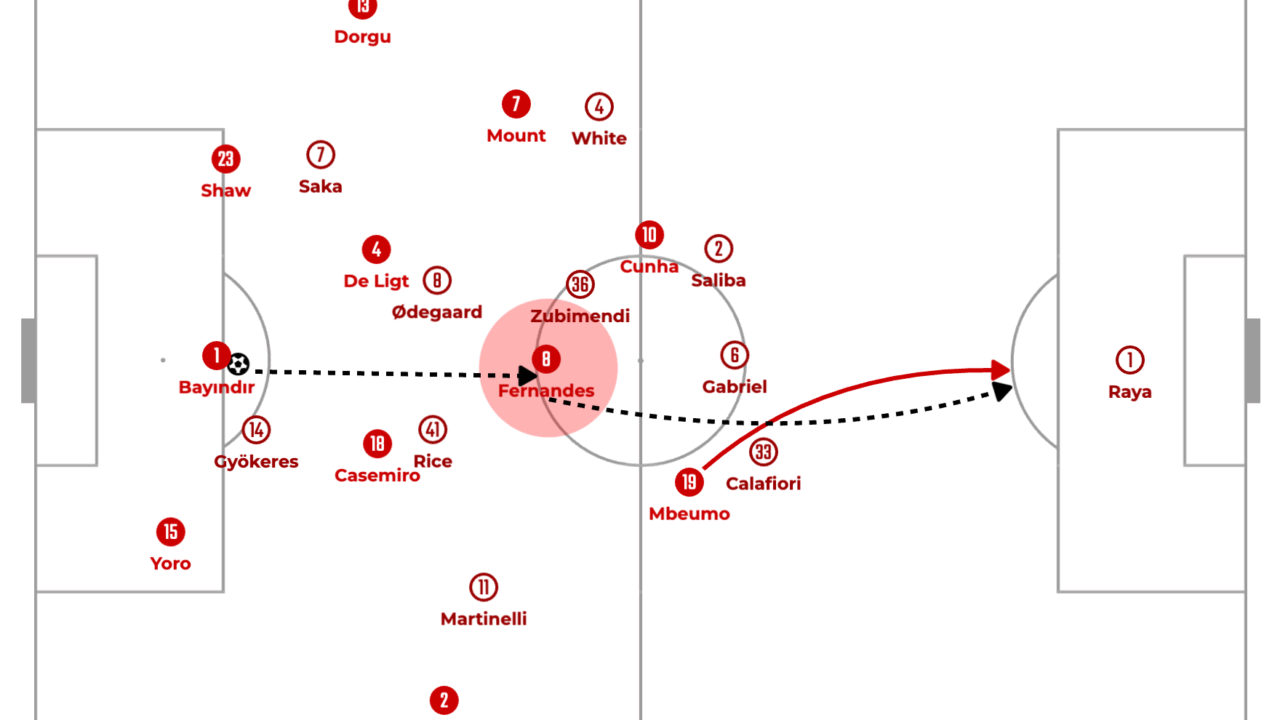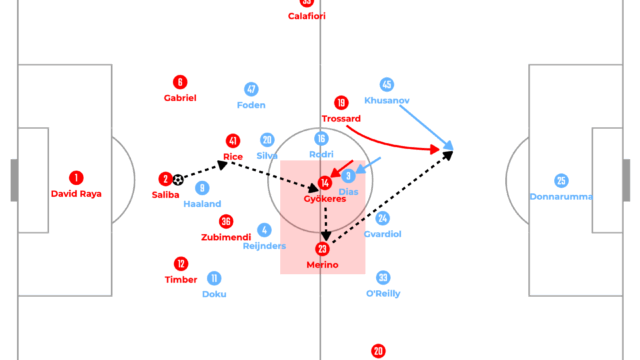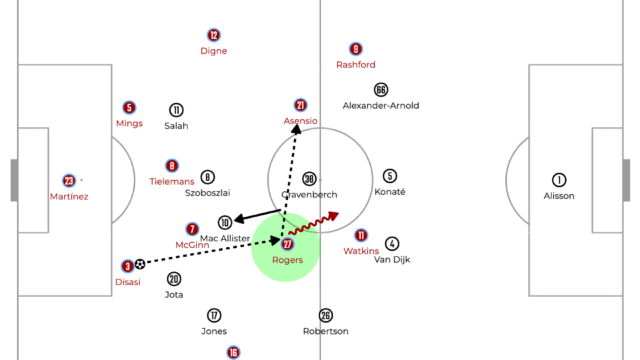25-26 Premier League MW1 Manchester United 0-1 Arsenal [Match Analysis]

In this article, the game between Manchester United and Arsenal will be broken down and analysed tactically.
Line up
Here’s the line up of the game.

Manchester United made some changes from last season as Bayındır was in goal instead of Onana and both of the new signings, Cunha and Mbeumo were selected up front. On the other hand, Zubimendi and Gyökeres started as the new acquisitions for Arsenal.
Man United Nullified the Rotation
Manchester United made a strong start thanks to their pressing. When Arsenal tried to play out from the back, their strength was rotations to make it difficult for the opponent to find who to mark. However, Amorim matched up the shape and encouraged his team to keep marking the opponents and swap markers if needed.

Like the example above, Arsenal rotated players to confuse the opponent. Against this fluidity, Man United pressed well as Fernandes often kept closing Ødegaard down or Dalot and Casemiro swapped the markers following the rotation between Rice and Calafiori.
And more importantly, the intensity to keep applying pressure on the ball even when Raya received the ball made it so difficult for Arsenal to play out from the back safely.

This is the example of United’s high pressing in the 47th minute. Raya found Ødegaard dropping deep to receive the ball after being pressed by Mbeumo from his left. Ødegaard was marked by Fernandes so the only option for him was playing back to Gabriel. This is a good pattern of build up to beat the pressure on the goalkeeper. However, he received immediate pressure from Mbeumo, so he played back to Raya, but then, Cunha applied pressure on him from the opposite side, forcing Raya to play long. Eventually, De Ligt reached the ball launched by Raya before Gyökeres who committed a foul against him.
Another thing to notice from this example was how they applied man to man pressing. Arsenal’s left side flexibly rotated, but United’s men kept marking tight to nullify all options in that flank.
This man to man pressing caused a lot of problems for Arsenal and they couldn’t play out from the back in the way they wanted.
Arsenal’s Positional Structure
On the other hand, in the midfield, Arsenal’s positional structure successfully let them possess the ball to progress into the final third.

As United set the defensive block of the back five, both wingers Saka and Martinelli stayed high and wide to pin the United’s wingbacks. This created the gap in each half space where both fullbacks White and Calafiori exploited by drifting inside.
To stabilize the possession at the back, Zubimendi often dropped in between Saliba and Gabriel to create a 3v2 at the back and Ødegaard also dropped to receive the ball behind the opposition first pressing line.
This positional structure worked well against United’s man oriented defensive block. The only problem was they couldn’t progress the ball well from the back to create this state in the game.
Quick Threat from Mbeumo & Cunha
Finally, the most important part of the game, which is how Man United threatened Arsenal, is going to be discussed. They used to be a team who can only generate chances from counterattacks, but in this game, they created fast breaks from playing out from the back.

The illustration above shows how Arsenal pressed and United bypassed it by a long ball. Arteta’s team basically set a high block, but following a back pass to the goalkeeper, Gyökeres applied pressure on Bayındır. At the same time, Arsenal’s wingers and 8s stepped higher to close United’s centre backs and Casemiro, which meant Arsenal’s back four and Zubimendi needed to cover the opposition wingbacks, three attackers and Fernandes.
This is too difficult for them to cover the underload at the back and the long ball from Bayındır to Mount caused the second ball situation, which was secured by Cunha in the middle of the pitch.

Then, Mbeumo sprinted through the gap between Gabriel and Calafiori to receive it in behind, leading to a goal scoring opportunity.
The similar situation is illustrated below.

Bayındır found Fernandes in between the lines, who turned forwards to play in behind and again, Mbeumo exploited the space in behind Arsenal’s back line.
These sequences occurred a lot in this game, for example, Cunha received the ball and beat White and played a fast break in the 68th minute.
Overall, Arsenal had huge problems in pressing high, as their attackers up front stuck to their marker, it left huge space for the defenders to cover. In addition to the amount of space to cover, they lost many duels by the individual skills of Fernandes or Cunha, causing troubles for Arteta.
Manchester United, who could bring some important figures like Mbeumo, Cunha and Šeško, showed how much they can do against other big clubs and Arsenal also proved themselves again by scoring from a set piece and kept the lead to win a game by a small margin. Both teams seem to be bright this season.


